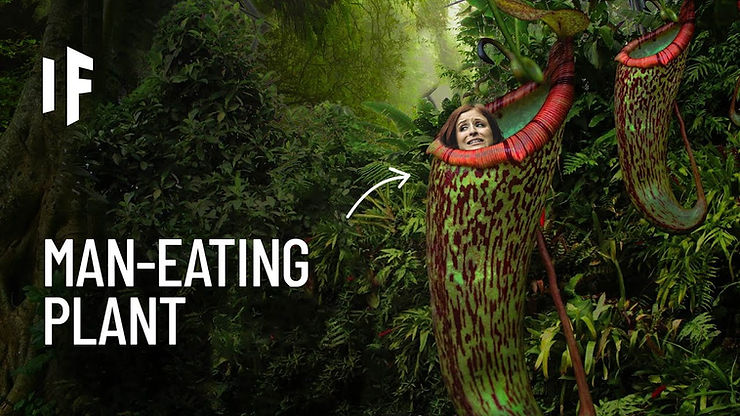By: Jeremy Jin
Carnivorous plants have fascinated scientists and are still a subject of research today. A famous naturalist named Charles Darwin was especially drawn to these plants and conducted experiments on them. He even wrote a study on carnivorous plants, expressing his interest in their amazing adaptations. As scientists built onto his studies, they started to realize how complex these carnivorous plants actually were.
A recent discovery made by Grafe and his team involves a pitcher plant in Borneo that specializes its diet of insects with the feces of bat guano. This plant has adapted to attract bats to lay in its special leaf by matching the bat’s echolocation calls.
Another exciting discovery is the discovery of the almost complete DNA sequence of the Venus flytrap, which has a genome size similar to humans. The studies imply that the flytrap may have achieved nerve-related genes from its prey of insects, which contributed to the evolution of its jaw-like mouth.
Researchers have also compared the proteins and hormones found in the digestive fluids of carnivorous plants with digestive fluids in non-carnivorous plants. They have found that carnivorous plants use defensive chemicals used by other plants to prevent herbivorous insects. This adaptation allows carnivorous plants to break down and absorb their dead prey.
Also, scientists have discovered that some enzymes in carnivorous plants are incredibly stable even under extreme conditions of impressively high heat and acidity. This stability could possibly give insights for developing stronger enzymes for industrial purposes.
Carnivorous plants have evolved their unique feeding strategies to live in low-nutrient environments. While most plants absorb nutrients from the soil, carnivorous plants take over habitats with poor soil quality and acquire nutrients from alternative sources such as animal flesh. By capturing and digesting prey, they gain a strong advantage in harsh environments.
In popular movies, people act as if large man-eating carnivorous plants would grab people and eat them, like in the movie, “Little Shop of Horrors.” However, it is important to realize that carnivorous plants do not eat people. They primarily prey on insects and other small animals.
Even the larger species mainly trap small mammals for their feces rather than their bodies. For a carnivorous plant to capture and digest a human, it would take a powerhouse of energy that a carnivorous plant doesn’t have, and its cellular structure limits any large-scale movement.
Nevertheless, carnivorous plants continue to capture the interests of scientists, who study their adaptations, evolution, biochemistry, and hunting strategies. These plants are used as models for exploring various scientific questions, including how organisms adapt to extreme conditions and how stationery beings outmaneuver mobile beings. They may also offer practical applications, such as inventing more stable enzymes for industrial purposes.
However, the idea of a carnivorous plant consuming a human is only in fictional stories and not possible in reality. At least, not as far as we know……











